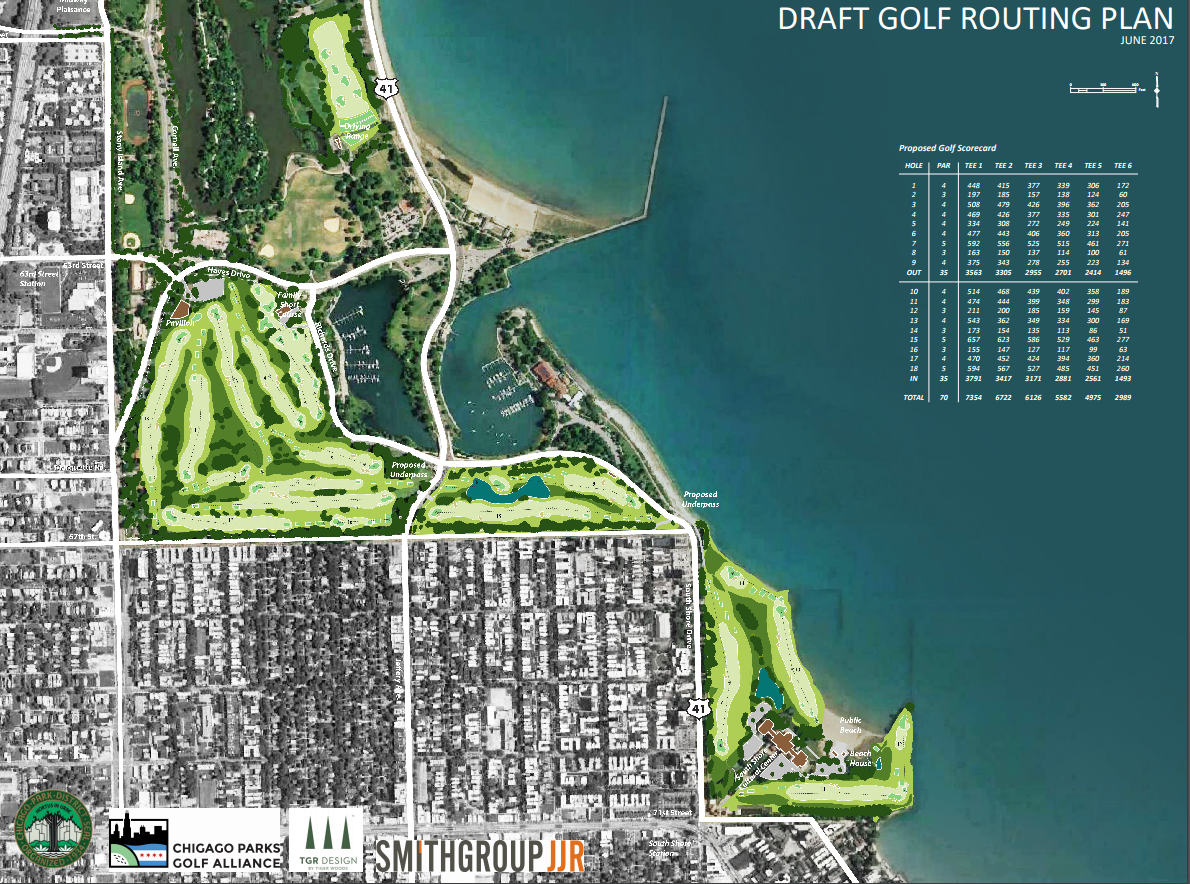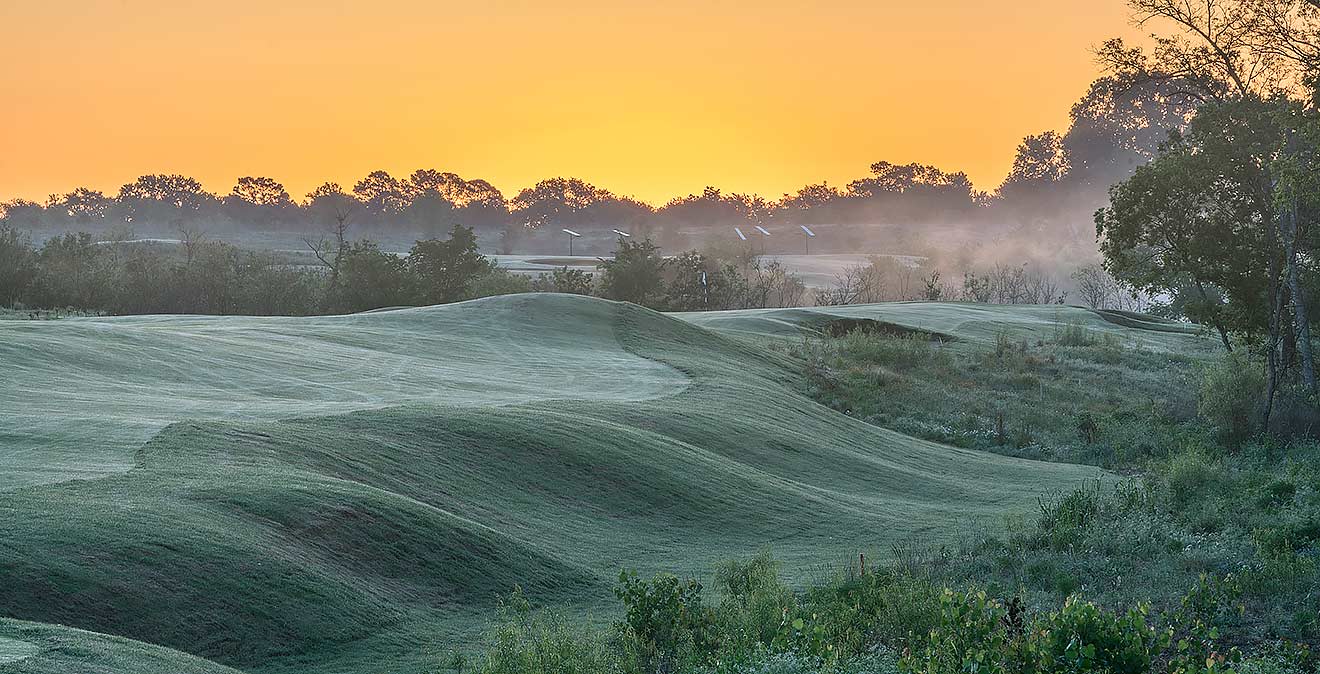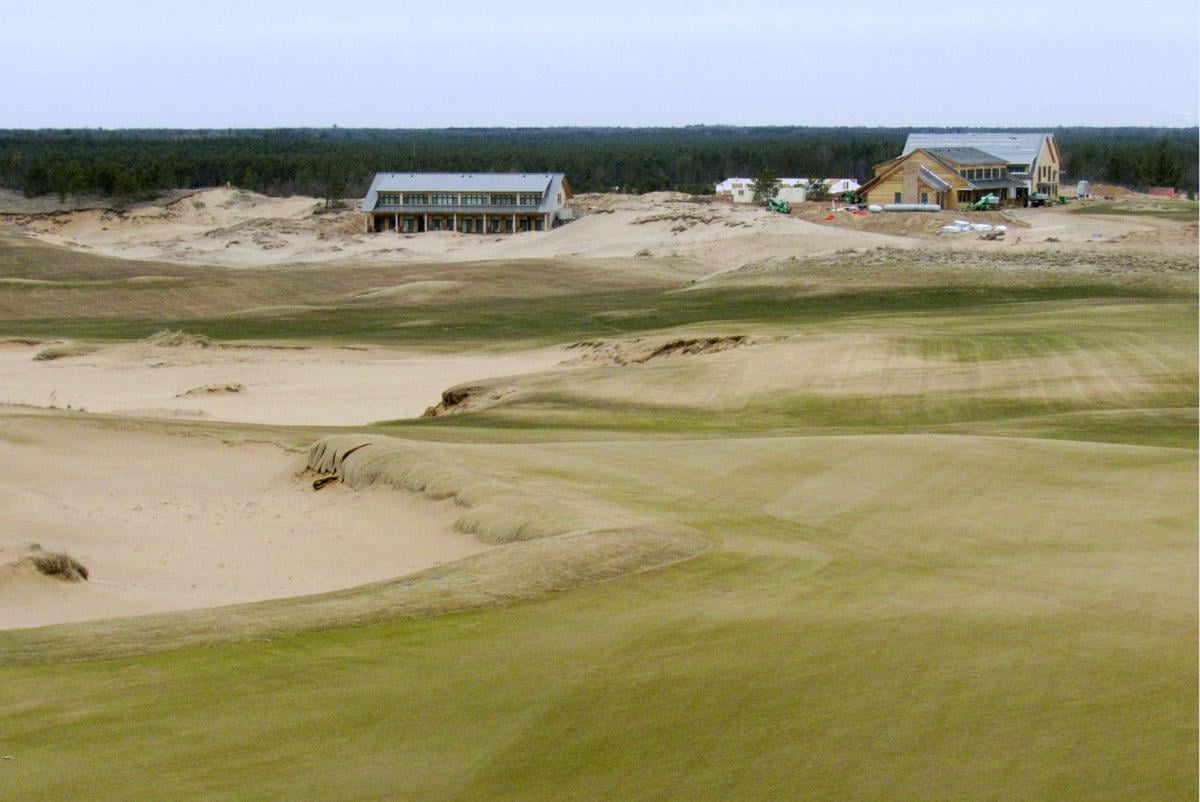Tiger & Obama's Jackson Park Plan Unveiling Met With Questions
/Take your politics and stick 'em in a drawer, as the plan unveiling for a Tiger Woods design at President Barack Obama's presidential library complex has been met with the kind of architectural scrutiny and perspective you'd hope for in a public project. The effort is of note given the role of the Olmsted Brothers in this area and their influence on Woods' lead designer, Beau Welling.  Ed Sherman sets up the TGR Design from the Chicago Parks Golf Alliance perspective this way:
Ed Sherman sets up the TGR Design from the Chicago Parks Golf Alliance perspective this way:
The Chicago Parks Golf Alliance and TGR Design representatives unveiled the proposed layout Wednesday night during a public meeting at the South Shore Cultural Center.
Let’s just say 2020, the year of the targeted debut for the course, can’t come soon enough after seeing TGR’s plans. A golfer’s imagination truly is in overdrive in trying to envision the final result.
The Chicago Tribune's Blair Kamin looks at the proposal from a landscape architecture perspective and questions elements of the merging of two courses. He isn't thrilled from the Olmsted perspective in part because Tiger architect Welling has not yet been in communication with the folks developing the park aspect.
But the planning process for that park, which took on new layers of complexity Wednesday with the unveiling of a design for a $30 million Tiger Woods golf course in the park's southern end, almost surely would have given Olmsted pause.
He believed that all elements of a park should be subordinated to a greater whole. That's what the designers in charge of a Chicago Park District push to draft a new plan for Jackson Park said at a public meeting Wednesday.
Yet such an all-encompassing vision is not yet evident. Latent conflicts between different priorities for the park have not been brought to the surface and thrashed out. The designers of the golf course have yet to talk to the designer of the landscape that will surround the planned Obama Presidential Center. The lack of coordination threatens the promise that the center and golf course will endow Chicago's south lakefront with a park equivalent in quality to Millennium Park or Lincoln Park.
For decades, the south shoreline trailed its North Side counterpart in everything from acreage to amenities, a result of racially discriminatory under-investment by the Park District. A 1999 plan for the south lakefront has helped alter that separate-but-unequal reality. In recent years, the city has poured millions of dollars into Burnham Park south of McCormick Place, including a new harbor and playground at 31st Street as well as a new pedestrian bridge at 35th Street.
From a golf point of view, Teddy Greenstein outlines the positives he sees (10!) and sees plenty to like.
• Holes 12-14 will have the million-dollar views, with No. 13 sandwiched by two par-3s. The 13th will play 362 yards for mortals, but if the course gets a BMW Championship (aiming for 2021) or Presidents Cup, players would hit their tee shots over the public beach, stretching the hole to 543 yards.
"We asked ourselves: How can we maximize the experience on the lake?" Welling said. "The holes are going to be absolutely spectacular. (No.) 12 will have a peninsula green, water right, left and long, with a marquee snapshot of downtown Chicago. And it could be windy."
• Lake Michigan should be in view from a half-dozen holes, and others will play along the Jackson Park Harbor. A recontoured lake will swallow balls short of the par-3 eighth green.





















